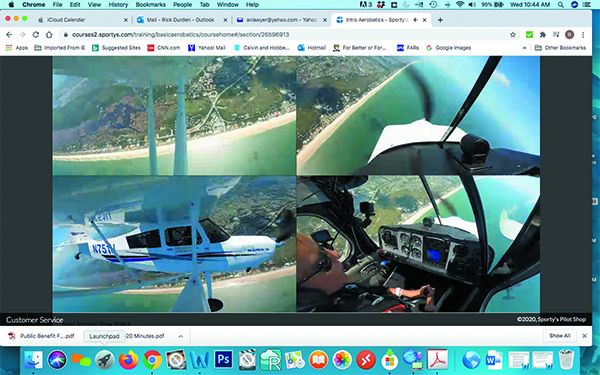In the June 2020 issue of Aviation Consumer, we reviewed the first of what we were told would be a series of aerobatic training videos from Sporty’s (www.sportys.com) prepared in conjunction with aerobatic legend Patty Wagstaff. It was a broad introduction to the world of akro with everything from history to snippets on many of the maneuvers and getting involved in the sport.
We liked the program and recognized that aerobatics is a complex subject and the introductory course could not go into depth. After watching it (and rewatching many of the sections), we were ready for detailed analysis of the maneuvers.
The second course in the series, “Basic Aerobatics with Patty Wagstaff (Volume 2),” has been released and we found ourselves burying ourselves in it and not coming up for air for much longer than we had intended.
The course concentrates on the three fundamental maneuvers from which all aerobatics are built: the loop, roll and spin. The course itself consists of ten videos—beginning with what a pilot should know before starting aerobatic training (keep an open mind to new ideas and experiences), with frank talk about things that might worry a prospective student, and then on the individual maneuvers. It includes an impressive library of what we consider valuable training guides as we’ll as performance flying materials on competition aerobatic sequences, details on low altitude waivers and flying formation.
The course contents make it clear—and we’ll repeat it bluntly: The course is not a substitute for hands-on aerobatic instruction.
Integral to the course is clearly showing what can go wrong in each maneuver and how to recover from messing up—which, in the real world, every single pilot does more than once. We think that makes a powerful argument against trying akro in a normal-category airplane.
Each video of an individual aerobatic maneuver, such as the aileron roll, lasts at least 10 minutes. That turns out to be about right to carefully dissect a maneuver that takes less than 10 seconds to perform. It emphasizes the need to learn to operate the controls—rudder, ailerons, elevator—independently of each other, and how each will be used in each portion of the maneuver.
Numerous video cameras and well-designed computer graphics allow the student to see the maneuver from various angles and learn where to look for reference points while flying the maneuver.
We noted that each maneuver was flown nearly perfectly—bowing to the educational law of primacy—so the student sees it done right the first time. In our conversation with Wagstaff, she expressed her concern about aerobatic students who are not taught properly and said that she and the production team had worked some long hours to present the right information on how to do each maneuver. It shows.
In the videos, Wagstaff describes that a pilot flying aerobatics needs to be smooth on the controls as we’ll as aggressive. At first glance, those requirements seem contradictory. However, watching the videos of stick deflection during the maneuver makes it clear that the needs work together—a willingness to rapidly put a control all the way to the stop but do so with grace.
Wagstaff also told us that one of the purposes of the course was to serve as a refresher for pilots who have been flying aerobatics for some time. We consider that to be true. We’ve been flying akro for over 40 years and when we saw her tip on how to tell how far to pull up before starting an aileron roll it was a forehead slap—we wish we’d learned that back in the beginning.
We liked the fact that the course describes how to fly the maneuvers in airplanes with and without inverted fuel and oil systems using a Super Decathlon and an RV-6.
At $99.99, the course isn’t cheap. However, in our opinion, the quality and quantity of material presented may we’ll mean that a prospective akro student learns enough to save more than that once training in the airplane. We also think it’s worth the price as a refresher for anyone who likes a little Vitamin G when flying.





